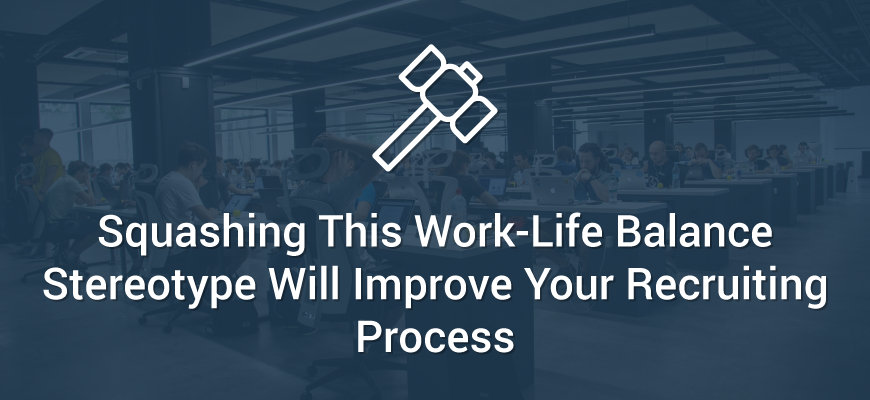Fact: more men experience work-family conflicts than women.
This seems backwards from our traditional view of work-life balance and work-family balance. However, a new report from SHRM found 46 percent of men experience work-family conflict, while just 43 percent of women feel the same.
Underrepresenting males in your recruiting process, when it comes to family needs and work-life balance, will lead to missing out on talented male candidates. As today’s times and roles are changing, so must your recruiting strategies.
Here is what you need to do to start the wave of change for family-men in the workplace:
Recognize the issue
 This is certainly a diversity and inclusion issue.
This is certainly a diversity and inclusion issue.
I once had a colleague share that his manager gave female employees a ‘free pass’ when they asked to leave early to pick up a sick kid at school. When he had the same need, the manager questioned him saying this is something his wife should be taking care of. He felt devalued and not treated equally.
The truth is, more and more men care as much as women about the need to handle household responsibilities. Not recognizing this fact will especially hurt in recruiting more diverse and younger men. Also, employers need to recognize more single men may be raising children as well as two men in a same-gender marriage.
Feature both men and women prominently in promotional materials and speak openly and proudly to men about your work-life balance initiatives while recruiting. Not only will that impress men who need these benefits, it sends them a strong message on the importance of diversity and equality in the workplace.
Stan Kimer, President of Total Engagement Consulting
Break the silence
 Short-term disability is usually thought of as a benefit that mainly helps women during maternity leave. As an HR leader, I’d often receive complaints from women about the two-week waiting period with the policy we held. So, we re-evaluated the program and worked with our broker to reduce the waiting period to zero.
Short-term disability is usually thought of as a benefit that mainly helps women during maternity leave. As an HR leader, I’d often receive complaints from women about the two-week waiting period with the policy we held. So, we re-evaluated the program and worked with our broker to reduce the waiting period to zero.
The funny thing was when we audited the program, those who were actually using the short-term disability benefit were primarily men (nine out of 12 people in the studied period) — they were the silent majority.
I’m a big proponent of respecting work-life boundaries. However, when I addressed employees at my current company, my comments were mainly geared toward women who may need to plan their days around their kids’ schedules. I completely missed the boat and ignored the men who are very active participants in their kids’ lives — the men who coach the soccer team or share in responsibilities equally with their spouse.
Gaylyn Sher-Jan, Chief People Officer and VP of Enterprise Services at Insitu, a Boeing Company
Notice the signs
 I am an example of the health benefits of a work-life balance. I believe that I have added 10 years to my life by having this arrangement. I am very fit and much “younger” than many who have walked this earth for 56 years like I have.
I am an example of the health benefits of a work-life balance. I believe that I have added 10 years to my life by having this arrangement. I am very fit and much “younger” than many who have walked this earth for 56 years like I have.
I can put it in no simpler terms than an example of a man who worked himself into a slumped posture. I noticed him at a company awards banquet along with a vibrant wife whose age was similar to his. She looked over at him and said, “I just wish you had come home earlier.”
Now they were retired and he was barely able to move while she was high energy and raring to go. It’s important to target work-life balance for both men and women because overworking is unhealthy at any age for anyone. In fact, it is worse beyond 40 and 50, as the body starts to feel the effects of the stress and lack of physical activity.
Scott Deuty, Author of “Secrets of an Over 50 Former Fat Man”
How do you ensure both men and women are attracted to your work-life benefits? Let us know!











